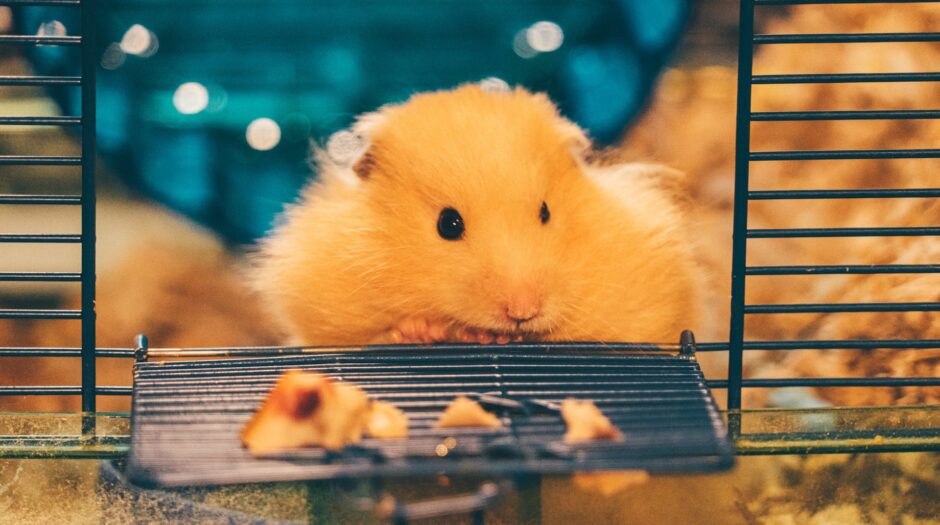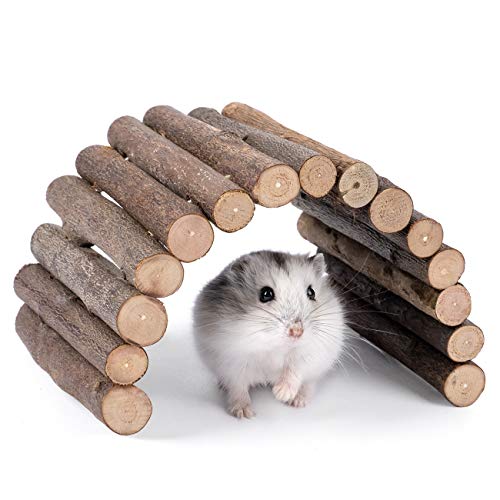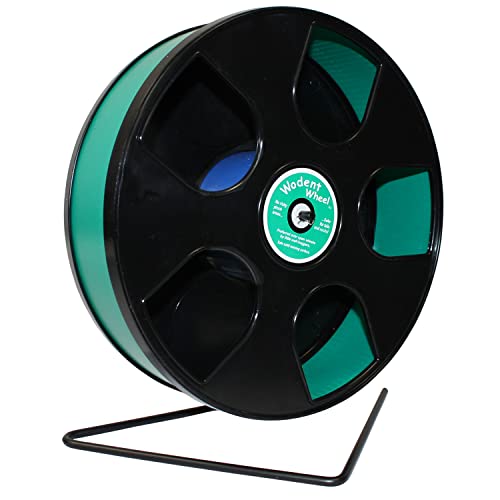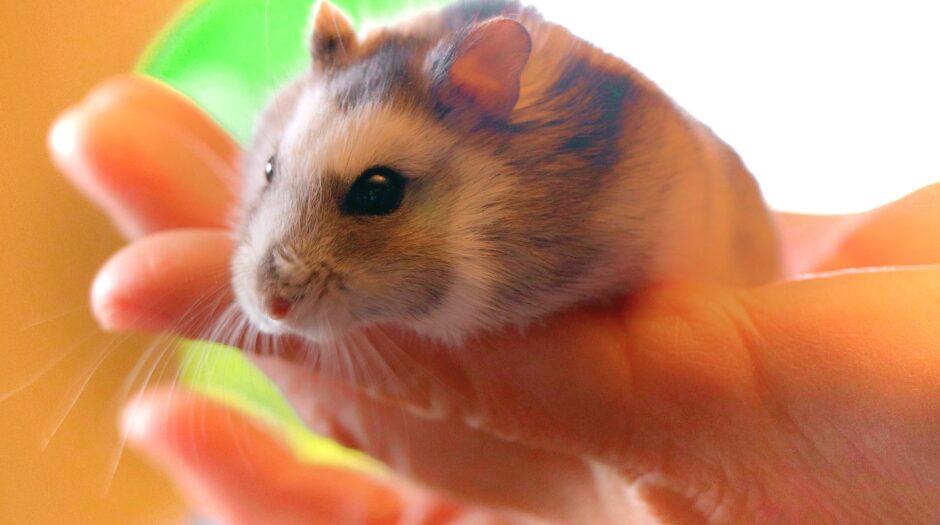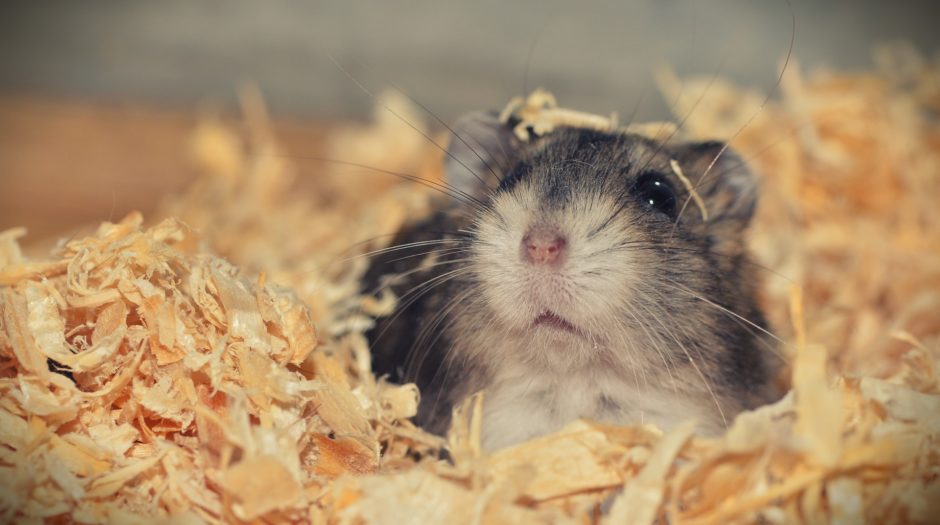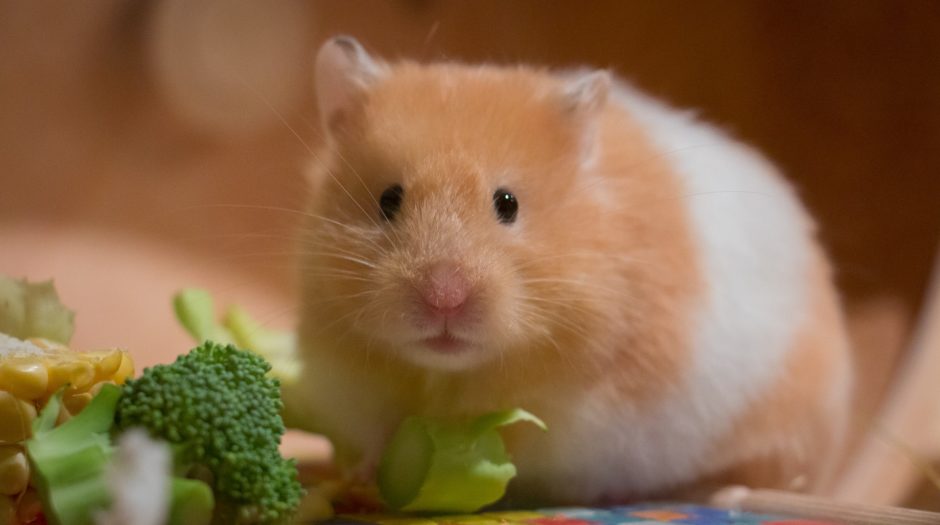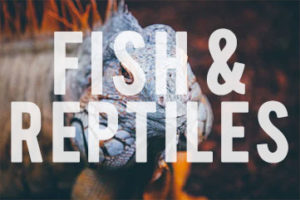How to Set Up a Hamster Cage | Beginners Guide
It’s important to provide the right habitat for any pet whether big or small…but it can be hard to know where to start when setting up their new home. Luckily for you this guide will help you through the process of making the perfect cage setup for your hamster!
This article will go over the appropriate cage size, bedding, enrichment, and more!
We may earn a commission if you decide to purchase something on this page (Thanks!).

Cage Size and Structure
The first thing you need in order to set up a hamster enclosure is of course a cage!
Hamsters need a bare minimum of 450 square inches of uninterrupted floor space. However, it is always better to go bigger if possible. Hamsters in the wild used to run for miles during the night foraging for food, getting their energy out, and searching for nesting materials. They need a big enclosure so that they can still engage in their natural instincts that they would have in the wild. – Hamster Cages – Information, Size, and Q&As
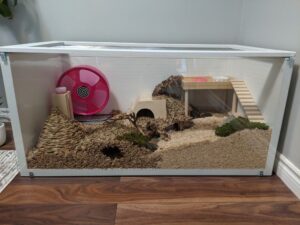
Image Credit: Pinterest
Hamster cages come in many forms; glass tanks, wire cages, and DIY cages. The choice is up to you depending on what you want, but just make sure it meets the bare minimum. If you have not chosen a cage yet, we highly recommend you read one or more of the following articles…
- Best Hamster Cages of 2021 – Reviews and Where To Buy
- How to Make A DIY Bin Cage For Your Hamster
- IKEA Hamster Cage Ideas

Substrate
Once you have your enclosure, you’re going to want to find some safe substrate to put inside. A couple of the best choices are paper-based bedding (unscented), and aspen shavings. Try to avoid anything scented, as well as pine and cedar shavings as they can be harmful to your hamster.
Providing substrate for your hamster is super important because they are natural burrowers, this means that they need a lot of bedding in their enclosure. It’s recommended to make the bedding at least 6 inches deep, however some hamsters won’t actually start burrowing until the bedding is 10 inches deep.

Hideout
Hamsters are prey animals, meaning in order to feel safe and secure, hamsters need a place to hide when they are sleeping, feel scared or just want to be alone. In fact, you can even give your hamster multiple hideouts throughout their enclosure so your hamster can have more options.

Wheel
In the wild hamsters would run for miles during the night, which is why it is super important that you give them a safe, and proper sized wheel. For dwarf hamsters it’s recommended to have a wheel that is 8 inches or bigger and for a Syrian or Chinese hamster generally a 10-12 inch is best. Try to avoid any wire or mesh wheels for safety reasons.

Accessories
This is the stage where you can start getting more creative. Are you going to go for a theme; natural, colourful, underwater, winter wonderland? Or are you going to mix and match?
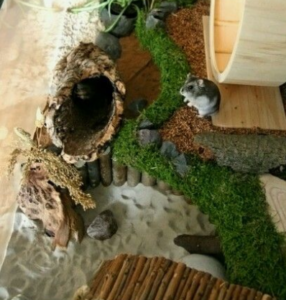
Image Credit= Pinterest
Accessories are another thing you will need in your cage as they have two main benefits. Firstly, they allow your hamster to feel safer in the cage. It’s recommended to almost crowd your cage with accessories (not overcrowd) because in a large cage you don’t want to have too much empty space. Remember hamsters are prey animals, if you leave a huge open space, this may just make them not want to come out of their hideout/burrows. Accessories fill up that space and allow your hamster to hide and explore around them in a way that’s comfortable.
On top of that, accessories can actually be a form of enrichment for your hamster. Things like grapevine wood and cork logs introduce a new texture to your cage for them to explore. A mini ladder or ramp can allow your hamster to climb a little bit (not all hamsters are climbers though). Tunnels can mimic the burrows they would naturally make underground, in fact if you push a tunnel partially into the bedding on one side, it can act like a starting point for your hamsters actual burrow.
*Make sure you are using accessories suitable for your hamster breed. Is the accessory big enough for them to fit through without getting stuck?

Sand Bath
A sand bath is another great thing to put in your hamsters cage. Hamsters can’t be bathed in water because it can cause negative effects on them. Sand allows your hamster to remove any excess oils in their coats and gives them another texture to dig in.
Many hamster owners will leave the sand bath in the cage 24/7, which allows the hamster to roll around and dig in it whenever they want to. Hamsters also use the sand bath as a bathroom which makes spot cleaning easier for you. However, you don’t have to keep the sand in as a permanent thing if you don’t want to. Just make sure that you are providing them with sand frequently.
Another thing to keep in mind is the size of sand bath you are providing them. Your hamster should be able to move around within the sand bath and roll in it without falling out. It is also recommended to put a little bottomless hideout or some sort of covering over top so that your hamster can feel safe enough to use it.
It’s also important to make sure you are using sand that is safe for hamsters. A few options include chinchilla bathing sand, reptile sand (no calcium or dyes), and children’s play sand. Stay away from anything labelled as “dust” or “powder” as these can cause respiratory problems for your hamster.

Chew Toys
Hamsters teeth are constantly growing so they need things to gnaw on such as wood and/or other natural things to wear them down. There are many options out there to choose from so try some out and see what your hamster likes the best! *Keep in mid that chewing on the metal bars of their cage is not your hamster wearing down their teeth but rather a stress behaviour.

Food & Water
Hamsters need to eat and drink to survive. You are going to want to get some sort of food and water source. For water you can choose between using a water dish or water bottle and for their food you can either get a food bowl or scatter feed. Scatter feeding will give your hamster a bit more enrichment but either option is fine.

We hope this guide helped you set up your hamsters enclosure! We’d love to see your cages, post a picture on instagram and tag us @crittermamas.

